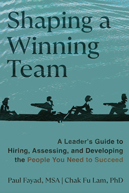
Busting the following myths-
MYTH 1: Behaviours and personalities are the same.
Myth 2: People can change their personalities.
MYTH 3: Everyone has good intentions at work.
MYTH 4: If I focus my attention on the problem employee (driller) I can increase productivity and quality.
MYTH 5: Intuition is an important part of the hiring process.
Log In or become an AIMA member to read more articles
